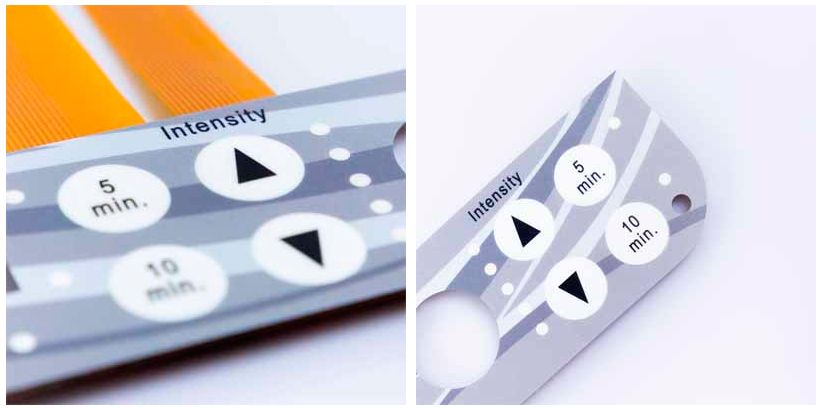
Membrane switches have become a ubiquitous part of our daily lives, found in everything from microwave ovens to sophisticated medical devices. At the heart of these components lies a critical factor: the actuation force. This force determines not only the tactile response of a switch but also its reliability and user experience. In this comprehensive guide, we delve into the various factors that affect the actuation force of membrane switches.
A membrane switch is an electrical switch for turning a circuit on and off. It differs from a mechanical switch, which is usually made of copper and plastic parts. A membrane switch is a more integrated and reliable solution consisting of layers, including a graphic overlay, spacer, and conductive traces.
Actuation force is the amount of pressure needed to activate a switch. It's a crucial parameter that affects the tactile feel and the overall user interface. A switch with too high an actuation force may be tiring to use, while one with too low an actuation force can lead to accidental actuations.

The dome in a membrane switch, typically made of stainless steel or polyester, plays a significant role in defining the actuation force. The material's properties, such as elasticity and hardness, directly impact the force required to deform the dome and close the circuit.
The shape and size of the dome also affect actuation force. A taller dome will generally require more force to collapse, while a wider dome may distribute the force differently, affecting the actuation.
The overlay material, often a form of polyester or polycarbonate, and its thickness can significantly alter the actuation force. A thicker overlay requires more force to ensure that the membrane switches beneath is activated.
Temperature and humidity can change the properties of the materials in a membrane switch, thus affecting the actuation force. High temperatures may soften the materials, while cold conditions might make them more rigid.
The overall design of the user interface, including the size of the keys and their spacing, can influence how much force a user must apply to register an actuation.
There are several methods to measure the actuation force, including using a force gauge to apply a precise amount of force to the switch until it actuates.
Various industry standards provide guidelines for actuation force, ensuring consistency and reliability across different devices and applications.
Manufacturers strive to balance the actuation force to ensure comfort and prevent user fatigue, especially in devices that require frequent use.
Customization allows for the actuation force to be tailored to specific applications or user preferences, enhancing the overall experience.
Advancements in materials may lead to new possibilities in actuation force characteristics, potentially creating switches that are more responsive and require less force.
As user interface design evolves, so too will the considerations for actuation force, potentially leading to new standards and expectations.
Understanding the factors that affect the actuation force of membrane switches is crucial for designers and engineers. By considering material choices, design parameters, and environmental conditions, one can optimize the user experience and functionality of these versatile components.